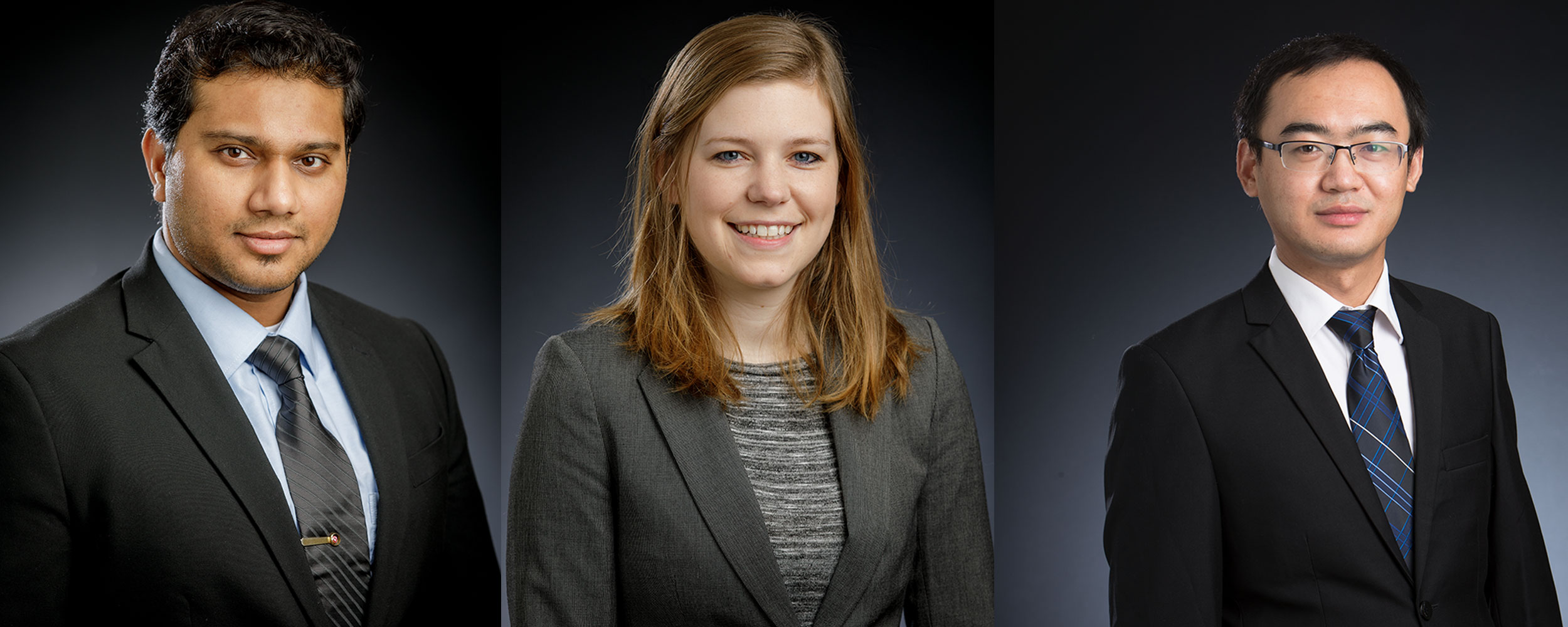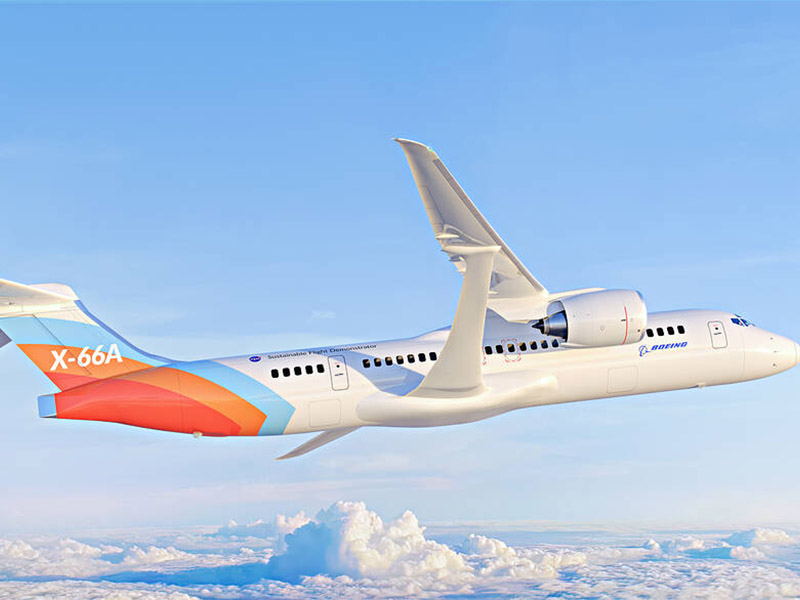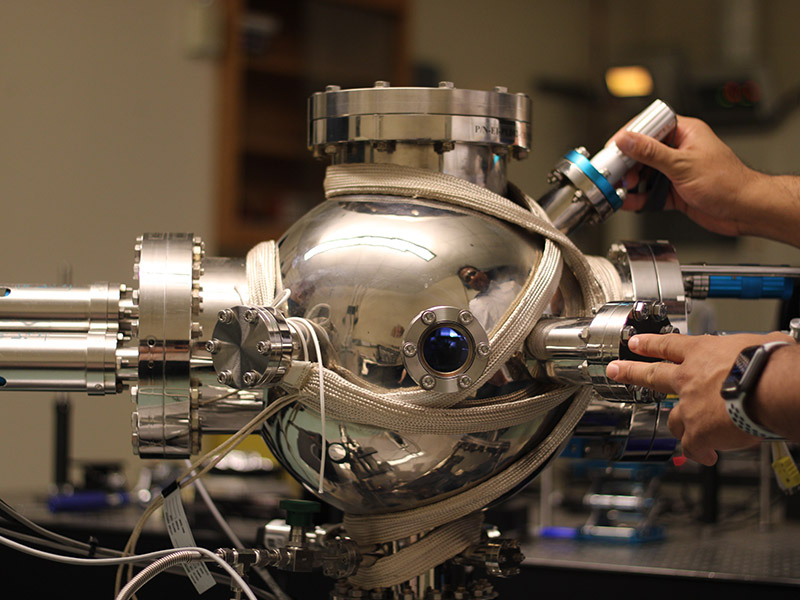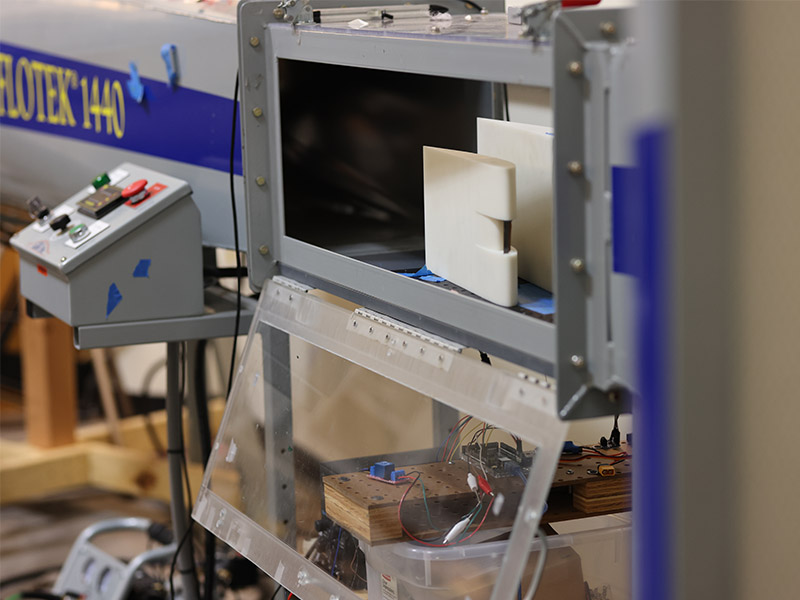
3 CEAT faculty members awarded NASA Oklahoma EPSCoR research initiation grants
Wednesday, January 31, 2024
Media Contact: Desa James | Communications Coordinator | 405-744-8626 | desa.james@okstate.edu
Being a leader in aerospace innovation and application is key for Oklahoma State University
to maintain its standing as the preeminent land-grant institution. In the School
of Mechanical and Aerospace Engineering, three faculty members are set to accomplish
just that.
In a testament to their academic expertise and dedication to advancing aerospace engineering,
Drs. Wei Zhao, Ritesh Sachan and Alyssa Avery have been selected for NASA research
initiation grants.
The NASA grants, awarded as part of the Oklahoma Established Program to Stimulate
Competitive Research (EPSCoR) Research Initiation Grants (RIG), serve as a launching
pad for faculty research, facilitating eight-week residencies at various NASA centers.
This immersive experience not only allows the professors to forge invaluable relationships
with NASA colleagues but also empowers them to delve deep into their research projects,
enriching their understanding and bringing back invaluable experience and knowledge
to their students.
Of the five coveted NASA EPSCoR RIG awards, three have gone to MAE faculty members,
highlighting the department’s distinction in the field. Sachan and Avery will conduct
their research at NASA’s Glenn Research Center in Ohio. At the same time, Zhao will
work on his project at Langley and Ames Research Centers in Virginia and California,
respectively.
“MAE has a rich history of working closely with NASA on various research and educational
endeavors,” said Dr. Sandip Harimkar, MAE department head. “These research implementation
awards to our three outstanding young professors will further strengthen our research
capabilities and facilitate collaborations in key areas aligned with NASA’s priorities,
such as advanced aerospace structures, materials for harsh environments, and autonomous
systems.
“These opportunities will actively engage students in research while allowing faculty
to bring findings into classrooms, thereby preparing students for potential career
opportunities in critical areas.”
Zhao’s visionary project, titled “Graphics Processing Unit Computation and Reduced
Order Models for Nonlinear Analysis of Advanced Aerospace Structures,” aims to support
the United States’ ambitious goal of achieving net-zero greenhouse gas emissions from
aviation by 2050.
By focusing on the design of lightweight civil transport aircraft with extended wings,
Zhao seeks to address safety challenges posed by wing flexibility during flight. His
research promises to foster environmental sustainability as well as enhance aircraft
safety and fuel efficiency, laying the groundwork for the next generation of aerospace
innovations.

“To do this, we’re focusing on designing future civil transport aircraft that use
lightweight materials and have long wings,” Zhao said. “These long wings, however,
can be quite flexible and bend significantly during flight, which presents safety
challenges. Our research primarily seeks to understand the structural behavior of
lightweight and long aircraft wings under various flight conditions.
“The findings from our research will help design aircraft that are not only environmentally
friendly but also safe and fuel-efficient. Additionally, our work supports the ongoing
development of the X-66 truss-braced wing, representing the latest advancements in
aircraft design.”
In the classroom, Zhao’s students stand to benefit immensely from his firsthand insights
into cutting-edge aerospace research as he seamlessly integrates real-world applications
into the curriculum, fostering a dynamic and inspiring learning environment.
Zhao states that the grant is of significant importance to his research endeavors.
It provides the essential resources to generate preliminary research data and establish
crucial computational infrastructure, including GPU-based accelerated parallel processing.
“This infrastructure not only enhances my current work but also helps me get prepared
for pursuing future competitive grants, such as the NASA Transformative Technologies
Transfer program and others,” Zhao said.
Meanwhile, Sachan’s pioneering project, “Ionization Radiation Studies in High Entropy
Silicides for Space Missions,” is set to develop novel material coatings capable of
withstanding the harsh space environments, including high-temperature radiation. By
exploring the properties of high-entropy silicides, a recently discovered class of
ceramics, Sachan and his team will equip students with invaluable experimental skills
while broadening their understanding of materials science beyond conventional boundaries.

“Since the high-entropy silicide materials are unconventional and don’t follow the
traditionally known fundamental materials science, the learnings of this project will
help in broadening the knowledge of students and bring awareness to leading scientific
discoveries,” Sachan said. “By including the discussions on these materials in my
undergraduate materials science class, I’m planning to show the students the journey
of materials from conceptual to advanced fronts.”
Through interdisciplinary discussions in materials science classes, Sachan will ignite
students’ curiosity and appreciation for the forefront of scientific discovery.
“The students involved in this project will learn several new experimental techniques
such as fabrication, characterization and property measurements that will create skills
helpful in a broad range of technical areas,” Sachan said.
Sachan states that he is honored to receive the grant as it is a reputed grant that
will lead to initiating new collaborations with NASA research labs and lead to developing
new science.
On another edge of aerospace innovation, Avery’s project, “Ice Accretion at Low Altitude
for Autonomous Systems,” holds promise for enhancing our understanding of low-velocity
icing behavior and developing cost-effective sensors capable of detecting ice accretion
on low-altitude systems. Collaborating with experts at NASA, Avery’s research not
only contributes to the advancement of aerospace technology but also enriches her
teaching, enabling her to offer students invaluable insights into the intricate interplay
between aerodynamics, fluid dynamics, sensor development and atmospheric science.

“Aircraft icing uses a blend of aerodynamics, droplet fluid behavior, sensor development
and atmospheric science,” Avery said. “Considering these subjects together help students
make logical and engineering connections with their courses and projects.
“I am incredibly excited to work on this project and with the experts at NASA Glenn.
I have been reading papers from the facility for the last 10 years. It is a great
opportunity for my own research to contribute to the work being done.”
As these forward-thinking faculty members delve into their research, their dedication
to innovation and teamwork promises to drive progress in aerospace.
With steadfast determination to push the limits of aerospace engineering, they serve
as catalysts for inspiring the next wave of innovators, positioning OSU as a leader
in aerospace research and education.
Photos by: Desa James and NASA
Story by: Desa James | IMPACT Magazine
